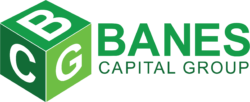The Magical
Mystery Tour
Changes in interest rates, inflation, stock prices, and Fed policy are not trivial. The consequences of errant policy or positioning can disrupt economies and easily lead to billions in portfolio losses for those on the wrong side of a move. However, as serious as the issues may be, it’s almost comical to hear those that can affect policy make statements that seem absurd. Investors that had priced in up to four 25–bps hikes have been upended by updated expectations of four 50–bps increases. Some are now calling for 300 bps by the end of 2022. The markets had been relying on Fed promises of no rate hikes until 2024. That new outlook sent the U.S. Dollar to 5–year highs.
Quick Links
We were told for a long period that, despite evidence and data to the contrary, that inflation was merely transitory. Now with inflation running at multi–decade highs the Fed has only managed a single 25–bps increase. When the FOMC meeting concludes on Wednesday, a 50–bps increase is widely expected. There had been so much pressure for increases that some members were calling for 75–bps moves instead to attempt to show that they are no longer ‘behind the curve.’ Fed Chair Jerome Powell has been handcuffed by his expressed desire to be open about upcoming moves and had long held the Fed would not begin to tighten until QE was ended. Things spiraled out of control so quickly that Powell’s plans for orderly policy moves have been thwarted by the Fed’s meeting schedule. With the Fed now clearly stating that 50–bps is ‘on the table’ for Wednesday’s announcement, the statement should make note of the possibility for more moves of 50–bps or even beyond. In light of calls for 75 bps, maybe only 50 bps would be less traumatic. FRB Cleveland President Loretta Mester said she is against “a shock of 75–bps” and favors being “very deliberate and very intentional” in tightening. She wants a “methodical approach” very much like Powell.
The journey and destination are unclear. Various Fed members want rates to return to neutral – but can’t define it. Normal is just as elusive. The only thing clear is that the Fed is embarking on a journey with no defined direction or goal. With the last 25–bps hike to initialize the battle on a foe that they saw as nonexistent for over a year, things are about to get ugly – quickly. The Bond Market Review considers Lael Brainard to be a valuable asset to the Fed. She was just confirmed as Vice Chair. She said the Fed shouldn’t focus on the pace of increases, but that “the combined effect will bring the policy stance to a more neutral posture expeditiously later this year.” That statement tells us that the Fed plans to move a lot this year – even if they don’t know where ‘neutral’ is. She said the Fed will address their balance sheet during this May meeting. For now, the Fed will ‘follow the yellow brick road’ to wherever Oz may be – but that’s another story.
Looking Ahead
- Equity cycles are showing another high near May 6th/9th followed by a low near May 16th
- Bond yield cycles show a low due near May 12th/16th.
- The FOMC will update their rate–policy stance on Wednesday (05/04) at 2 m. ET. Expect a 50–bps hike.
A Cloudier Shade of Beige
The Fed’s Beige Book described economic activity as moving at a “moderate” pace. It said manufacturing was solid but still subject to supply–chain and labor disruptions as well as higher prices. The report concluded that: “Outlooks for future growth were clouded by the uncertainty created by recent geopolitical developments and rising prices.” Yet, the pachydermic apparition in the room is economic growth. Q1 GDP just came in with a 1.40% contraction versus expectations of a 1% gain. This means the Fed is tightening with negative growth. Fighting inflation aside, that could be a reason for the Fed having to put the brakes on QT and rate hikes if growth continues to slow. The Q2 forecast for the Atlanta Fed’s GDP–Now stands at 1.6%. Another reason to cringe? Given the war in Ukraine and other factors, the International Monetary Fund just dropped their global growth forecast from 4.4% to 3.6%.
Now, as the Fed is set to begin a campaign of tightening, they’ll be doing do it against the backdrop of negative growth. That’s out of character, but market watchers think the Fed got ‘behind the curve’ with their tenacious denial of inflation – continuing their QE throughout very–good growth as the post–pandemic recovery took hold.
There’s no other way to put it: For the markets, April was about as ugly as it gets. A report by Deutsche Bank said there have only been 3 other times when stocks were down over 5% and bonds lost over 2% in the same month – placing April 2022 in a terrible light. While there were some powerful gains in between, the 2 largest losses this year for the Nasdaq happened last week. Those losses propelled the Nasdaq to its worst month since 2008 with a 13.26% drop. For the Dow Industrials the losses were less steep, though 3 of the largest drops occurred over the last 6 trading sessions. The Dow just had its worst month since February 2020. The story for the S&P was very similar to the Dow.
Treasuries, Agencies, and MBS
April caught global markets off guard – and we were not spared, as the magnitude of the selloff far exceeded our estimates and targets. Some of that ugliness spilled over into May as the yield on the 10–year note rose above 3.00% for the first time since 2018 in today’s trading. With the treasury curve as flat as it is, the 5–year note and 30–year bond had already trespassed 3% just days earlier. Early in April, the 10–year had inverted to 2–years and the 5–year note (versus 2–years) was within 10 bps of that same status. Into April 22nd, yields twisted higher and flatter with the 2, 5, 10, and 30–year sectors rising by 21.5, 14.5, 7.5, and 3 bps. Last week, yields rose 5, 2.5, 3.5, and 5.5 for those sectors. Those sector yields continued higher today by 1.5, 5, 5, and 3.5 bps. Our 3.07% upside target remains for 10–year yields and there are now 2 beyond that point at 3.18% and 3.36%. 2–year yields have risen for 9 straight months – which is the longest for data stretching back to the ‘70s (and maybe beyond).
While the Fed is about to embark on a hiking campaign that could leave their funds rate near 3% by year end, there are factors that could thwart that plan. Over the coming months the hikes will probably be the quickest of this century as the Fed could even go 25, 50, and then 75–bps in first steps with the second step of 50 bps coming this week. Whether Powell desires a 75–bps move or not, it will be discussed as there are some on the committee that are seeking a fast path to 3%. Such a move could choke the economy which is already running near zero growth (and was negative for Q1). Global economies are also being squeezed by the Ukraine war which could lead to a worldwide slowdown. Global sovereign debt alternatives that might stay more anchored could revise the conundrum of longer rates that refuse to follow the Fed far beyond the first few moves.
Moreover, the housing bubble could collapse as low rates go away and that market turns on itself after the huge price moves to the upside. With only one 25–bps hike to date, mortgage applications just fell to the lowest numbers since 2018 – as borrowing rates approached 13–year highs. Freddie Mac 30–year mortgage rates rose to 5.11% two weeks ago but then fell back 1 bps to 5.10% this past week. 5.11% was the highest borrowing rate since April 2010. 15– year rates have risen 49 bps to 4.40% since early April. The outlook is cloudy, war and supply disruptions remain, and there’s no sure path to a 3% funds rate.
The deficit stands at $668.3 billion for the first 6 months of fiscal 2022 as the shortfall for March was $192.7 billion. With stimulus, last March’s deficit was $659.6 billion and fiscal 2021 had already passed $1 trillion at its halfway point. Fiscal 2022 is running only 60.38% of 2021’s pace. In February, a net $162.6 billion of foreign investment flowed into U.S. assets. A sizeable $141.7 billion flowed into longer–term U.S. debt.
Earlier in April, the U.S. Treasury auctioned $46 billion 3–year notes at 2.738% (the highest since December 2018). Demand rose to March and the buying group that includes foreign central banks accounted for 53.4% of the issue versus a prior 55.1%. $34 billion 10–year notes brought 2.72% (the highest since January 2019) for the reopened February 2032 maturity. Demand fell and foreign allocations dropped from 68.2% to 64.3%. $20 billion 30–year bonds came next at 2.815% for the reopened February 2052 maturity. Demand was ugly and foreign buying fell from 71.5% to 65.2%. The 20–year February 2042 maturity brought 3.095% for $16 billion bonds. There was record demand and foreign buying rose from 64.4% to 75.9% of this auction.
Last week, $48 billion 2–year notes brought 2.585% (the highest since January 2019). Demand was very good and foreign buying rose from 55% to 66%. $49 billion 5–year notes came at 2.785% (the highest since November 2018). Demand fell though foreign allocations rose from 60.2% to 64% of this offering. $44 billion in 7–year notes brought 2.908% (the highest since November 2018). Demand was solid and foreign buying stepped up from 60.9% to 65.0%. Next week, the Treasury will offer 3–year notes on Tuesday (5/10), 10–year notes on Wednesday (5/11), and 30– year bonds on Thursday (5/12).
Economics
The merchandise trade deficit (Advance Goods Trade Balance) for March rose to a record $125.3 billion despite expectations of $20 billion less. Q1 GDP was expected to rise by 1% but the trade deficit was partially and maybe mostly to blame for the setback and surprise contraction of 1.40%. One bad result does not indicate a recession but it’s possible that 2 bad quarters might. Personal Consumption rose 2.70% with the GDP Price Index rising from 7.10% to 8.00% (annually). Ex food & energy, Core PCE was .20% higher to 5.20%.
Initial Jobless Claims were a little higher to their levels last month when they were the lowest since 1968 at 166K. They rose from a revised 168K to 186K and then fell to 180K over the past 2 weeks. Continuing Claims matched their pandemic lows of 1,474K 3 weeks ago and then continued lower to 1,408K last week – the lowest since 1970. It’s interesting in the light of inflation and available jobs that around 3.2% of workers that had retired a year earlier returned to the workforce. The Leading Index rose by .30% in March.
The Conference Board’s Consumer Confidence survey fell a slight .3 to 107.3. The Present Situation dropped from 153.8 to 152.6 but Expectations rose from 76.7 to 77.2. The University of Michigan surveys were a little better as Sentiment improved from 59.4 to 65.2 and Current Conditions rose from 67.2 to 69.4. Expectations jumped from 54.3 to 62.5 and inflation Expectations remained at 5.40% – a 41–year high! NFIB Small Business Optimism fell from 95.7 to 93.2.
Manufacturing was mixed but mostly lower as Empire (New York) Manufacturing rose from –11.8 to +24.6 and the Richmond Fed Manufacturing Index was 1 point higher to 14. ISM Manufacturing unexpectedly fell from 57.1 to 55.4 – the lowest reading since 2020. Prices Paid eased from 87.1 to 84.6 and New Orders fell .3 to 53.5. The Employment gauge fell from 56.3 to 50.9. Preliminary data showed Durable Goods Orders slowing to 13–month lows. The Chicago Fed’s National Activity Index fell from .54 to .44. Dallas dropped from 8.7 to 1.1 and Kansas City Manufacturing fell from 37 to 25. The Philadelphia Fed Business Outlook tumbled from 27.4 to 17.6 and MNI Chicago PMI (purchasing managers) dropped from 62.9 to 56.4. Industrial Production rose .90% in March and Capacity Utilization jumped from 77.70% to 78.30%.
Consumer Prices rose by 1.20% in March – sending the annual pace from 7.90% to 8.50%, the quickest inflation in over 40 years. Core CPI (ex food & energy) rose by .30%, sending the annual pace .10% higher to 6.50%. Given inflation, Real Average Hourly Earnings dropped even further – from –2.50% to –2.70% (annually). Real Average Weekly Earnings also lost ground – from –2.20% to –3.60% (annually). Producer Prices rose 1.40% and rose by a record 11.20% annually (from 10.30%). Core PPI rose by 1.00%, leading the annual pace to accelerate from 8.70% to 9.20%. Import Prices rose 2.60% in March. The annual pace quickened from 11.30% to 12.50%. Export Prices rose 4.50% – which took the annual pace from 16.50% to 18.80%! The Fed’s favorite inflation gauge rose .90% in March as the PCE Deflator quickened annually from 6.30% to 6.60%. The PCE Core Deflator rose by .30% softening Personal Consumption Expenditures from 5.30% to 5.20%.
Retail Sales rose .50% in March – after a revision from .50% to 1.70% for February. Ex autos, sales rose 1.10%. The Employment Cost Index rose by 1.40% in Q1. In March, Personal Income rose .50% and Spending outpaced with a 1.10% rise – robbing savings and employing credit. Fuel prices had the highest monthly increase in 6 years.
Homebuilder sentiment suffered a 4th decline as the NAHB Housing Market Index fell from 79 to 77 for the lowest reading in 7 months. Current Sales fell to the lowest rate since last September and Expectations dropped to the lowest level since mid–2020. With mortgage rates hitting 12–year highs, applications have been dropping. The refinancing index fell back to the lowest level since March 2019. In March, Building Permits rose .43% to 1.873 million annual units. Housing Starts rose .28% to 1.793 million annual units which marked the best pace since 2006 – with the most multifamily construction since January 2020. Sales of Existing Homes fell to their lowest pace since June 2020, with a 2.70% drop to 5.77 million annual units. The median selling price still rose to a record $375,300.
New Home Sales dropped for a 3rd month with an 8.62% tumble to 763K annual units. That was an 8.90% annual drop. Pending Home Sales fell for a 5th month with a 1.20% decline. Contract signings hit the lowest levels since May 2020. While surging just before rates soared to the upside, metro home prices jumped 2.39% in February. That Case–Shiller 20–city index accelerated from 18.94% to a record 20.20% annual increase. The FHFA House Price Index rose 2.10% leading to an annual increase of 19.80% from January’s 19.14%. That was the 3rd largest rise on record. March Construction Spending rose .10%.
Tuesday is set for March Factory Orders along with orders for Durable and Capital Goods. JOLTS Job Openings and April Vehicle Sales are also due. Wednesday brings MBA Mortgage Applications (which have fallen 5.0% and then 8.30% over the past 2 weeks), ADP Employment Change (private payrolls for April), the Trade Balance deficit for March, the ISM Services Index, and the interest–rate policy decision to conclude the May FOMC meeting. Thursday provides a last look into April jobs with Challenger Job Cuts and jobless claims data. Also due are Q1 Nonfarm Productivity and Unit Labor Costs. Friday reveals April payrolls with the U.S. Unemployment Rate and Consumer Credit for March.
Equities
The Dow Industrials lost 1.86% into April 22nd and then lost 834.19 points or 2.47% to end the month at 32,977.21. That down week saw a 939–point down day follow what had been a modest 105–point gain through Thursday. The Dow lost 4.91% for the month and then erased an early drop of 527 points (or 1.60%) today to gain .26%. The Nasdaq had losses of 3.83% and 3.93% to end April 13.26% lower. The Nasdaq rose 1.63% today. The S&P lost 2.75% and 3.27% to end the month 8.80% lower. The S&P rose .57% today. The Dow Transports rose 1.50% and then fell 1.34%. They finished April 8.71% lower. The Transports rose .31% today. Bank stocks fell .58% and then 5.16% to end April 11.34% lower. Bank stocks kicked off April with a 1.11% gain.
Other Markets
Crude Oil rose 2.57% last week to gain 4.40% for April. Crude rose .46% today. Commodities gained 1.33% and ended 4.43% higher for April. They rose .29% today. Gold lost 2.02% and then 1.00% the past 2 weeks to close out April with a 1.92% loss. Gold tumbled $48.10 or 2.52% today. The U.S. Dollar gained 1.73% last week and ended April 4.68% higher. The Dollar added .78% today and is riding 5–year highs. The Japanese Yen lost .93% last week on the way to a 6.57% dive in April. It lost another .35% today. The Euro tumbled 2.27% last week to end April 4.72% lower. The Euro fell another .36% today. Corn gained 3.18% last week and finished April up 9.28%. Corn fell .64% today. Cotton surged 9.23% last week, finishing April 12.26% higher. Cotton was up by 3.17%.
“There is an applause superior to that of the multitudes: one’s own.” Elizabeth Elton Smith
“Where facts are few, experts are many.” Donald R. Gannon
Doug Ingram, Financial Economist
Additional Information is Available on Request
Banes Capital Group, LLC (BCG) has been granted permission by the author, Doug Ingram and Strategic Technical Initiatives, to distribute this market commentary (MC). All views, opinions and estimates included are his as of this date – and are subject to change without notice. Mr. Ingram’s views, opinions, and estimates are not necessarily those of BCG and there is no implied endorsement by BCG of any of the information contained within this MC (which may in fact directly conflict with those being published and distributed by BCG, whether or not contemporaneous). In the event of such conflict, BCG is not under any obligation to identify to you any such conflicts. This MC is for informational purposes only and does not constitute a solicitation or offer to buy or sell any securities, futures, options, foreign exchange or any other financial instrument(s) and/or to provide any investment advice and/or service. Although the information presented has been obtained from sources believed to be reliable, we cannot guarantee or assume any responsibility for the accuracy or completeness of the information shown herein.







